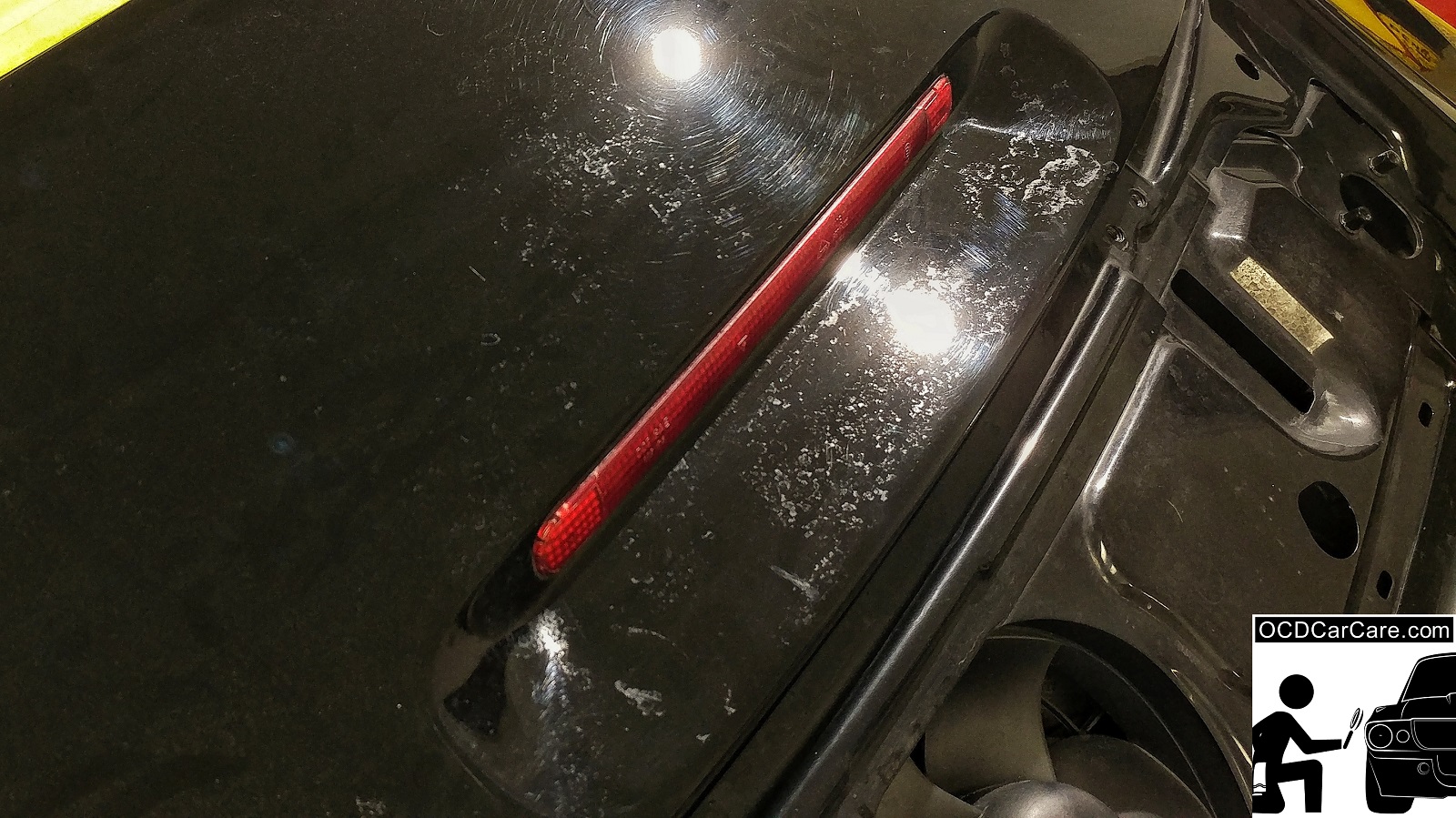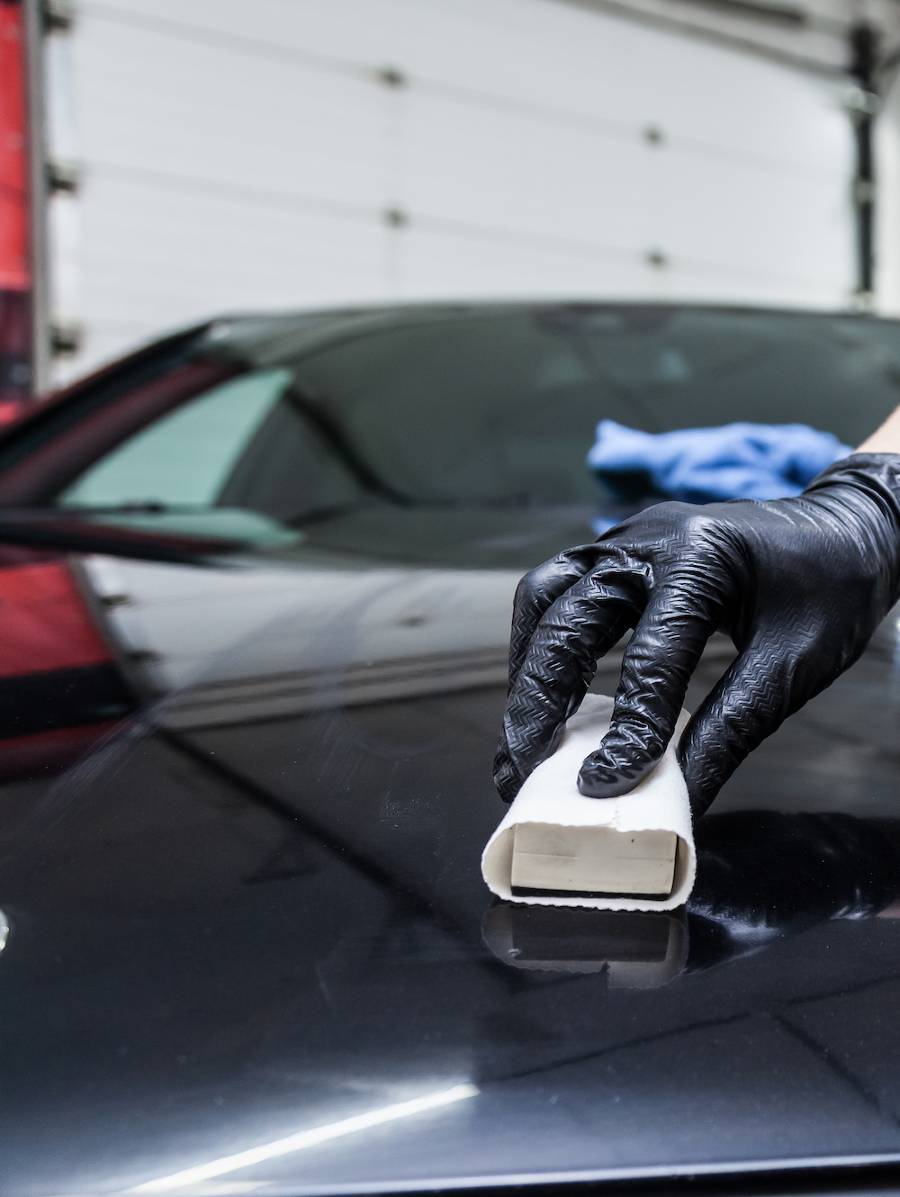Why Ceramic Finishing Is the Ultimate Solution for a Perfect Complete
Ceramic layer has actually emerged as a leading option for those seeking a remarkable coating for their vehicles, many thanks to its remarkable toughness and protective functions. What variables really established ceramic layer apart?
What Is Ceramic Coating?

When applied properly, ceramic covering produces a hydrophobic surface area that repels water and dust, making it simpler to clean up and maintain. Unlike typical waxes or sealers, which usually provide short-term defense, ceramic coverings can last for several years, depending upon the item top quality and application method. The procedure of applying ceramic finish needs precise prep work, consisting of complete cleaning and in some cases repaint improvement, to make sure optimum bonding and performance.
Ceramic coatings are not limited to auto surface areas; they can likewise be used on numerous products, including glass, steel, and plastics, providing a flexible option for improving defense. In general, ceramic finishing represents a significant development in surface area defense modern technology, integrating both visual and practical benefits for a large range of applications.
Advantages of Ceramic Covering
While numerous surface protection alternatives exist, the benefits of ceramic finish attract attention due to its distinct properties and resilient efficiency. Among the main advantages is its phenomenal resilience. Ceramic Coating Philadelphia. Unlike traditional wax or sealants that call for regular reapplication, ceramic finishings supply a durable layer that can last for numerous years, significantly lowering maintenance initiatives
One more remarkable benefit is boosted defense against environmental contaminants. Ceramic coverings produce a hydrophobic surface area that drives away water, dirt, and numerous toxins, making it less complicated to clean. This feature not just maintains the automobile's look yet likewise decreases the risk of rust and oxidation, particularly in extreme weather.
Furthermore, ceramic coatings use exceptional resistance to UV rays, preventing fading and destruction of paint in time. This UV defense is vital for keeping the aesthetic worth of surfaces and vehicles revealed to direct sunlight.
Furthermore, the glossy finish accomplished with ceramic finish boosts the general visual appeal, giving surfaces a showroom-quality shine. Generally, ceramic finishings represent a significant innovation in surface area protection modern technology, giving enduring benefits that satisfy both aesthetic and useful needs.
Exactly How It Functions
Comprehending the scientific research behind ceramic coatings discloses how they offer such amazing defense and durability. At its core, a ceramic layer is a liquid polymer that chemically bonds with the car's factory paint. This bonding develops a safety layer that is both oleophobic and hydrophobic, repelling water, dust, and oil. The key part of the majority of ceramic coatings is silicon dioxide (SiO2), which is stemmed from quartz. This compound adds to the layer's firmness and resistance to scratches, UV rays, and ecological pollutants.
The application procedure entails numerous steps, consisting of surface preparation, which is crucial to attaining ideal bond. When used, the covering undergoes a curing process, throughout which it sets and forms a semi-permanent bond with the paint surface area. This bond is what distinguishes ceramic coverings from conventional waxes and sealants, providing a longer-lasting safety obstacle that can endure for several years.
Moreover, the thickness of the covering can improve its safety qualities, guaranteeing that it can stand up to rough conditions. Inevitably, the science of ceramic finishings incorporates sophisticated products with cutting-edge application techniques to supply an unequaled degree of security and visual improvement for automobiles.
Comparison With Traditional Techniques
The benefits of ceramic layers end up being especially evident when contrasted to conventional paint security techniques such as waxes and sealers. While waxes supply a temporary sparkle, normally lasting a couple of weeks to a couple of months, ceramic coverings give a durable safety layer that can sustain for several years. This toughness substantially reduces the frequency of reapplication, making ceramic finishings an extra cost-effective service over time.
Furthermore, traditional techniques typically need comprehensive prep work and several applications to accomplish an adequate degree of defense. In contrast, ceramic layers bond at a molecular level with the automobile's surface area, producing a robust shield against ecological contaminants like UV rays, acid rain, and road salts. This bond boosts the automobile's resistance to scrapes and swirl marks, which prevail with conventional waxes and sealers.
Additionally, the hydrophobic buildings of ceramic finishings push back water and dirt, leading to much easier cleansing and upkeep. In contrast, wax and sealant-treated surface areas can attract gunk, necessitating more regular cleaning - Ceramic Coating Philadelphia. On the whole, ceramic coatings not just give remarkable security but also provide an Continued extra aesthetically attractive and long-lasting surface, developing them as the favored option for discerning car owners
Application and Maintenance Tips

Using a foam applicator, use the finishing in little sections, following the manufacturer's standards regarding density and overlap. Enable adequate curing time between coats, commonly 24-hour, to ensure proper bonding. After application, it is vital to prevent exposure to water or extreme aspects for at least a week to enable the finish to totally cure.
For maintenance, clean the lorry routinely with pH-balanced soaps and avoid abrasive materials. Touchless car cleans are advised to lessen scratching. Furthermore, using a ceramic maintenance spray can improve the layer's hydrophobic residential or commercial properties and try here long life. Routine evaluations for any kind of indications of wear will certainly help maintain the finishing's honesty and protect that excellent surface.
Conclusion
In verdict, ceramic covering arises as a remarkable choice for achieving a perfect automotive surface. Its outstanding longevity, safety qualities, and hydrophobic residential or commercial properties dramatically improve the automobile's look while streamlining maintenance initiatives. By forming a durable bond with manufacturing facility paint, ceramic covering efficiently shields versus scratches, UV rays, and environmental impurities. With a life-span extending numerous years, this innovative option not only maintains yet also raises the total visual allure of vehicles, making it an economical financial investment for auto lovers.
